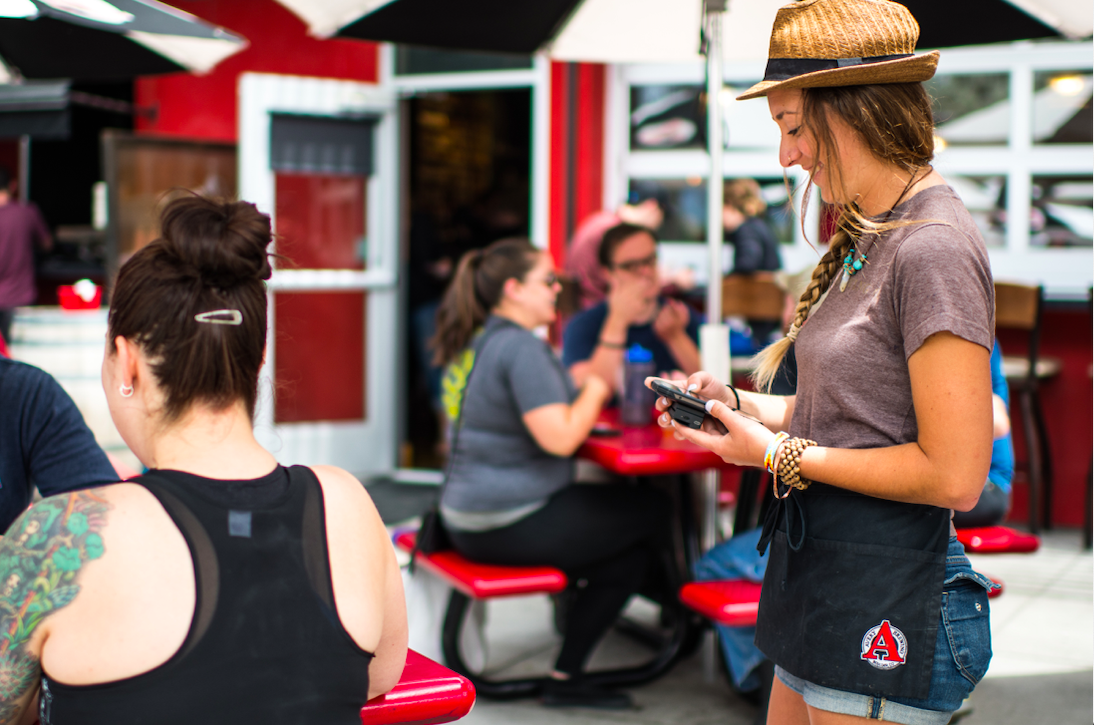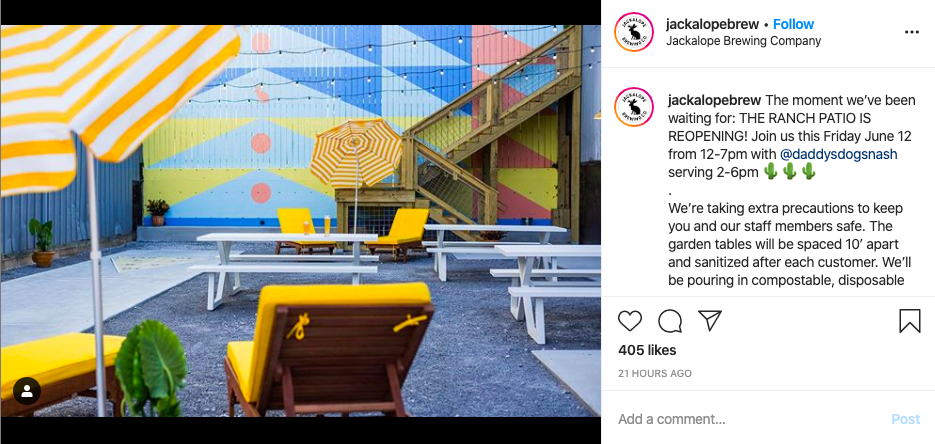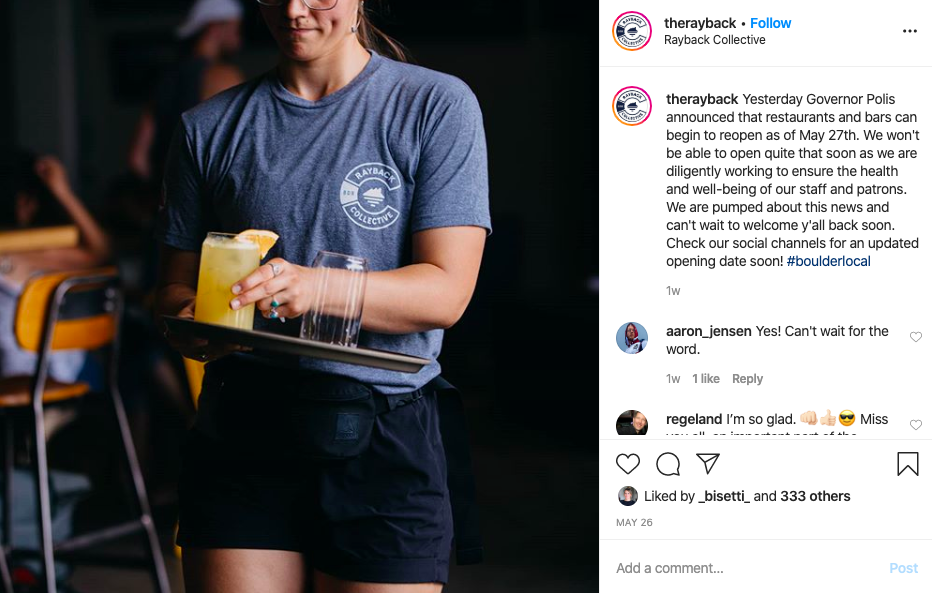Is Floating Service Right for Me?
The country is starting to reopen, but things aren’t going back to “normal” anytime soon. Adaptation is the name of the game and implementing a floating service model maintains a top level of hospitality while keeping staff and guests safe. As states and municipalities reopen their economies, many regulations remain in place for the safety …

The country is starting to reopen, but things aren’t going back to “normal” anytime soon. Adaptation is the name of the game and implementing a floating service model maintains a top level of hospitality while keeping staff and guests safe.
As states and municipalities reopen their economies, many regulations remain in place for the safety of employees and patrons. There are restrictions on party sizes, table spacing, mask-wearing, and more*. Many of these restrictions are forcing businesses to change their service models—but where do you begin? In this article, we make an argument for floating service as the ideal solution to cope with these new realities.
*Check out your local jurisdiction to get details relevant for your business.
What is floating service?
To understand Floating Service, let’s look at the other two most common service models: Counter and Table Service.
Counter Service
Most taprooms and smaller craft establishments utilize Counter Service: guests approach the bar, counter, or window to place their order and receive their items with a limited number of staff required to help them. Bartenders rarely come to the table to take orders. With Covid-prevention a top priority, counter service is no longer a safe option. It encourages crowding and unsafe closeness among patrons and frequent movement through your space. In general, it’s difficult to enforce social distancing and cleanliness standards, especially indoors, with a counter service model.
Table Service
The other prevailing service model is Table Service, in which a host seats the guest, a server takes orders tableside, a bartender pours the drinks, a runner delivers orders to the table, and a busser clears the table—a full service operation. Utilizing table service is a great solution right now, as it limits guests’ movement and makes it easier to keep them and your staff safe. However, staffing a table service model can be more costly than many craft establishments can afford, especially if they’re accustomed to utilizing counter service.
Floating Service
Floating Service is the happy medium between Counter and Table. In a floating model, your staff is empowered to flex through different roles—from bar to floor. Guests seat themselves at tables and staff come to them (much like in table service) reducing movement and interaction throughout the taproom. Staff roles are consolidated minimizing bodies and labor costs while maximizing the guest experience. Without deploying the entire staff, taprooms and brewpubs run seamlessly with this semi-table service or floating service model.
“Minimizing movement and congregation while keeping service costs low”
Why floating service?
The experience of going out and enjoying our favorite craft beverages is going to be different for a while, and may change permanently. Necessary precautions protect the health and safety of staff and guests. Floating service ensures guests still have the craft experience they expect while you keep an eye on labor costs and avoid policing guest movement through the taproom.
Additionally, floating service creates tableside conversations that are natural touchpoints for upselling and educating, like:
• Ask after a guest’s favorite style of beer or their preferred cocktail and use that knowledge to better suggest options and add on elements to the experience (like tasters of the newest beverage on tap).
• Educate your guests about the brewing process, the history of a particular dish or drink, or the story of your business. Make them an expert on your brand.
• Share information about your loyalty program and recruit them to join, so you can drive repeat business.
The personal touch generates “contagious loyalists”—guests who will return again and again, and spread the word among their friends and family.
How To Float
There are a multitude of ways floating service can be implemented and we’ll spell a few out here.
For Smaller Spots
Floating service could be possible with just one employee pouring drinks and working the floor. Or you could utilize two employees: one behind the bar and another floating on the floor, working in conjunction but staying in their own zones. Use signage to direct guests to seat themselves and place several convenient bussing stations to encourage them to put their dishes away on their way out.
For Larger Operations
Consolidate staff into multi-role groups, like server-bussers and bartender-runners. Your server-bussers roam the floor taking orders on your mobile POS and clearing tables. Bartender-runners focus on pouring and delivering drinks. Guests’ minds will be blown when their drinks or apps arrive from a bartender-runner while the server-busser is still at the table!
However you decide to consolidate roles, the key is that you’re minimizing movement and congregation while keeping service costs low.
Tools to Float
By employing just a few simple tools, you’ll be on-track to float on-demand.
Mobile POS
A mobile POS makes operating a floating service model simple and supports a seamless transition from counter to floating service—allowing you to support both models, depending on the needs of the day. “Stationary” tablets can easily be made mobile by swapping out a stand for a carrying case. Each floating server can have their own device so nothing is shared among staff (so Covid friendly).
In fact, we designed Arryved Service—our mobile Point of Sale software—with this service model in mind. Tabs are accessed and managed from any device, allowing guests to order, pay, and receive service from any available staff member.
Tipping
Flexing your service model may impact how you distribute tips, and tip distribution can be a complicated and sensitive task. Arryved Portal—the backend management system—has multiple tip calculators and reports that ensure tip distribution is consistent, smart, and designed with your staff in mind.
Contactless Ordering and Payments
Contactless ordering and/or payment tools aren’t mandatory, but they sure do help everyone keep their hands to theirselves. We offer two methods of contactless payment, Arryved Online and Arryved Mobile, and there are several others on the market.
Arryved Online is a fully-integrated online ordering solution. Guests can view your menu, order, and pay right from their own device. Their floating server brings the order directly to their table, checks in on their experience, and uses the opportunity to build a connection.
Arryved Mobile is a downloadable mobile app that allow guests to start, view and pay their tab for hundreds of breweries across the US. They’ll order from a server and see their tab reflect their order in realtime on the app. Key with both of these tools is their integration with the rest of the handy benefits of your point of sale.
Amidst the overwhelming changes happening every day, we recognize that flexing your service model might feel intimidating. That’s totally okay! With the right partner these transitions will be seamless for you, your staff, and your guests. Ultimately, we see customers thriving with a floating service model. It will grow your business, empower your staff, and enhance your guest experience—highlighting all the hospitality excellence that the craft industry is known for.



